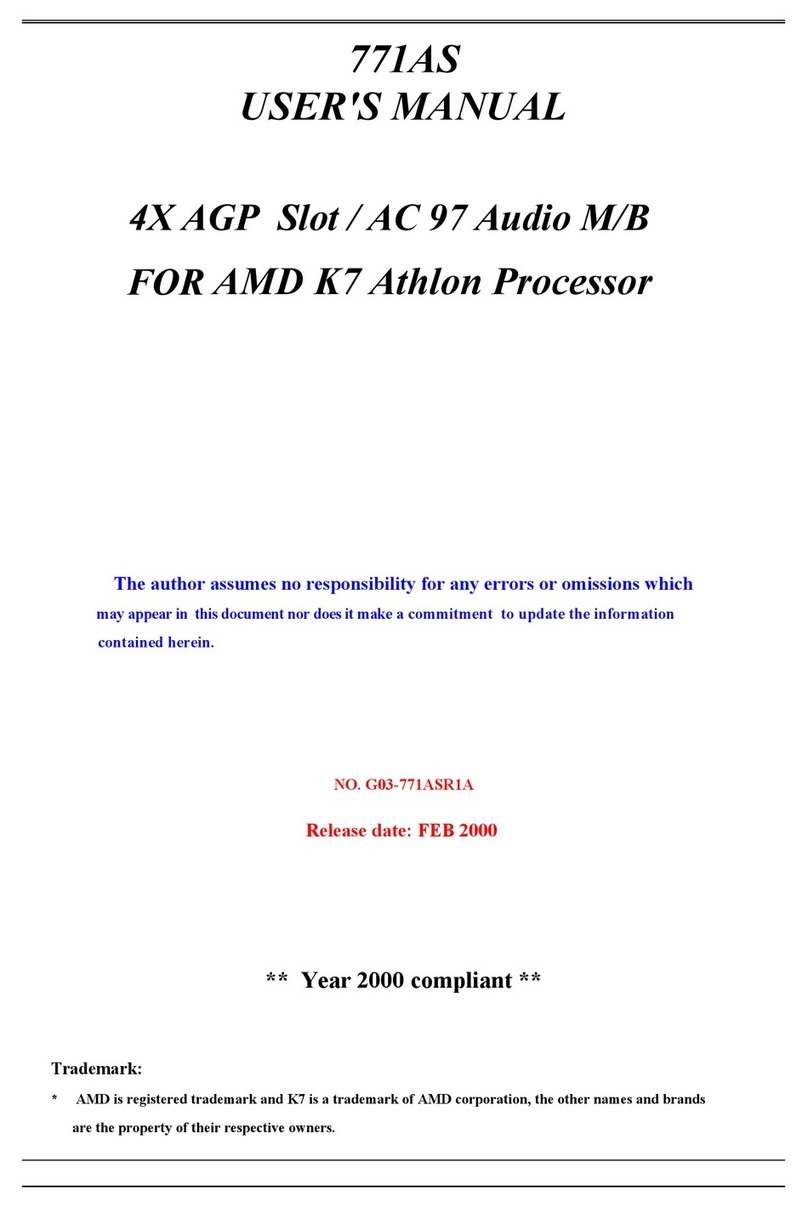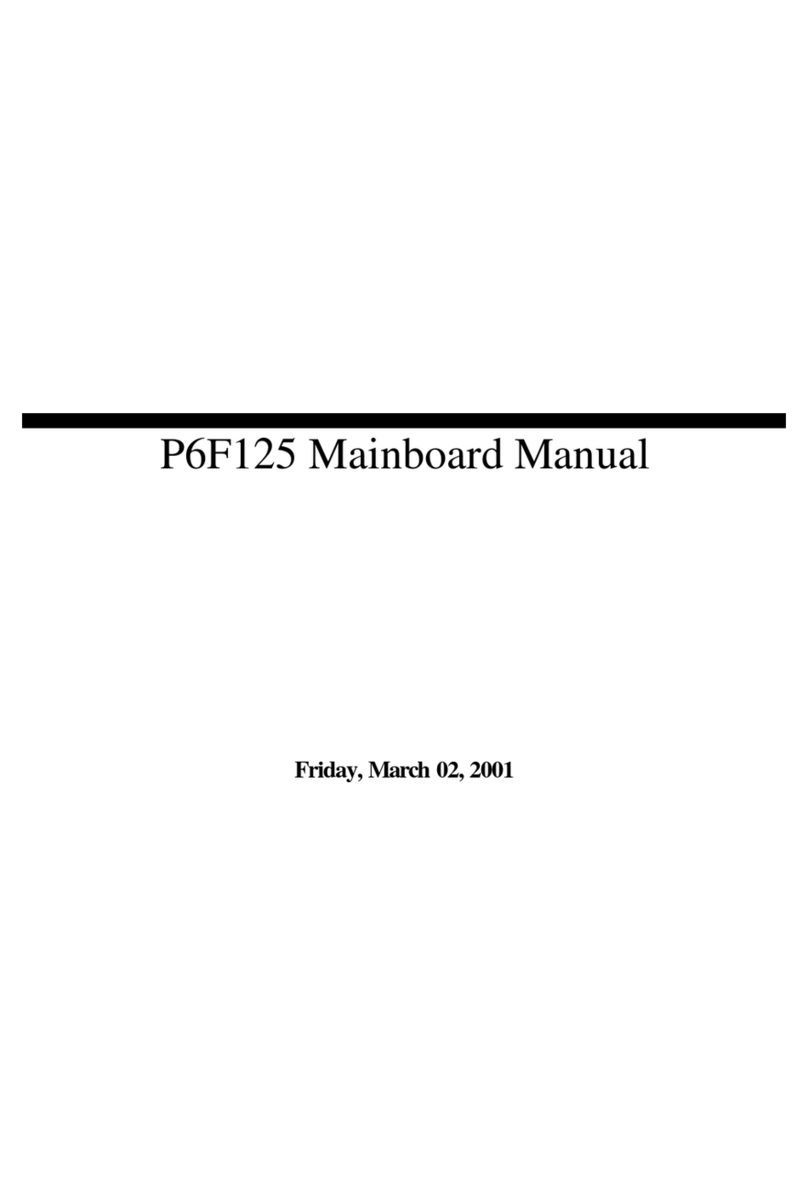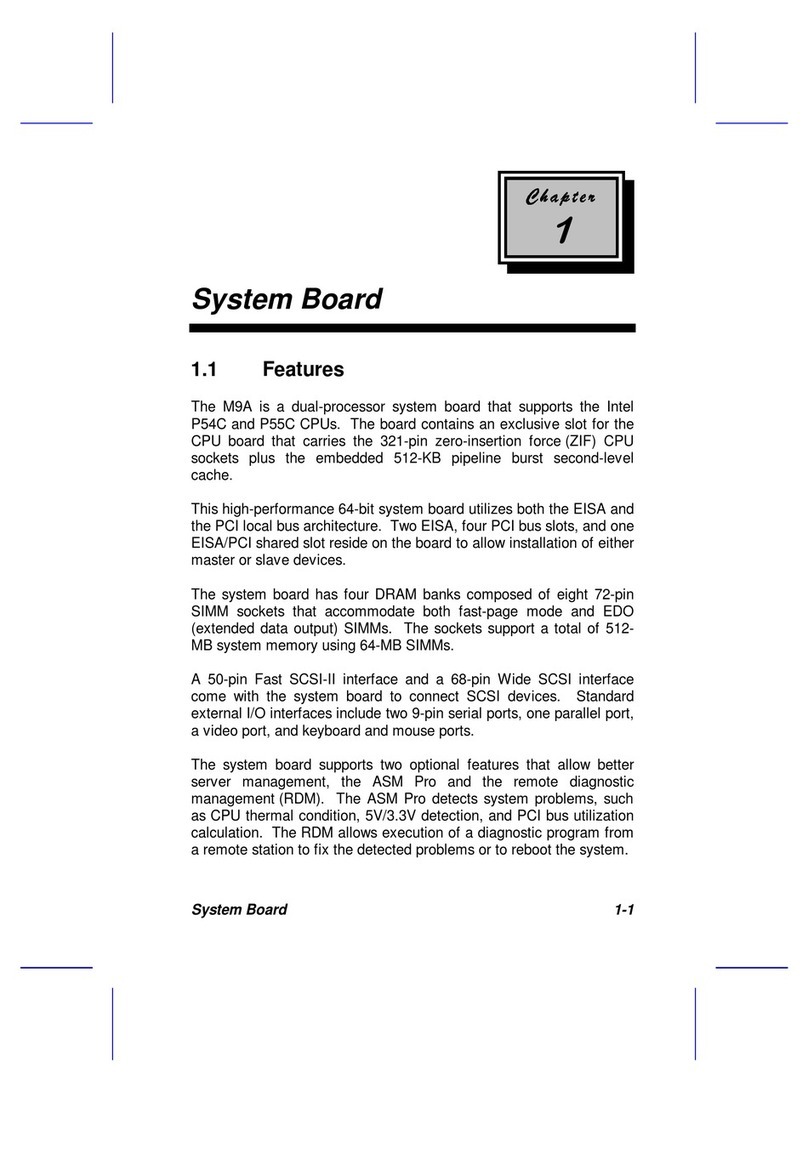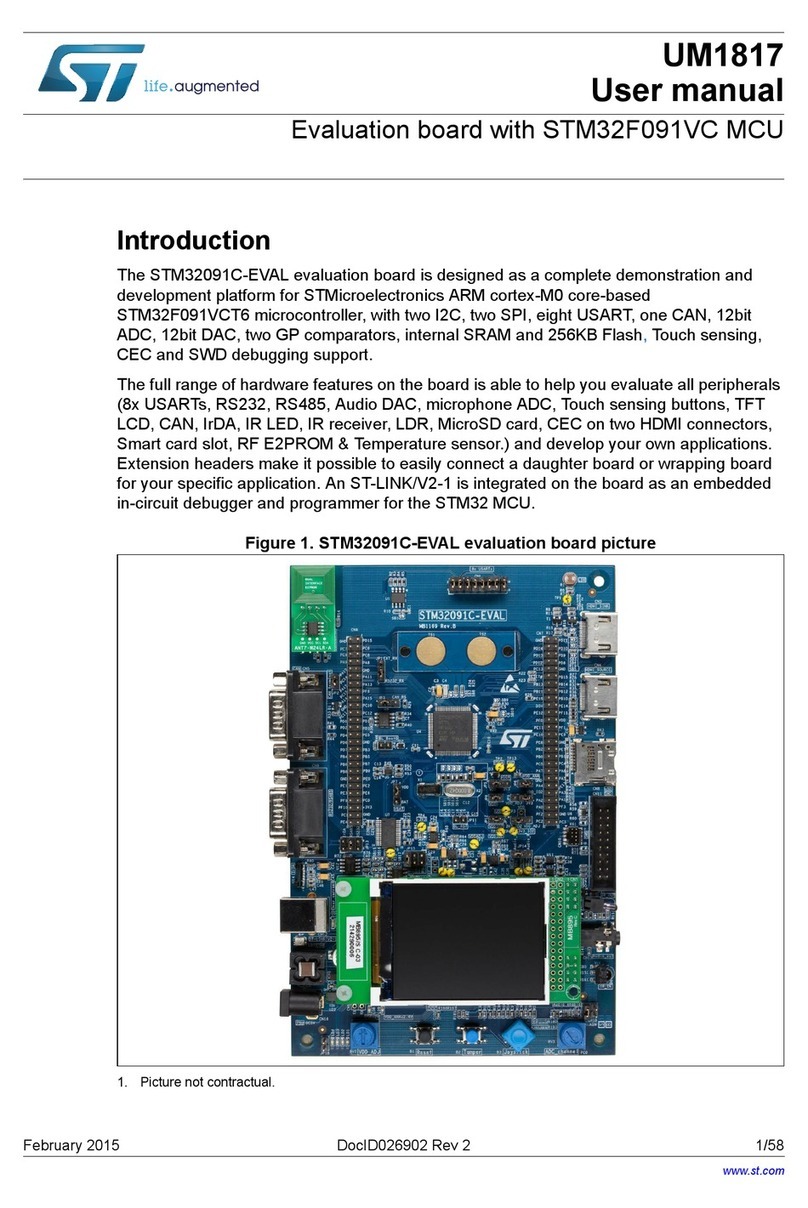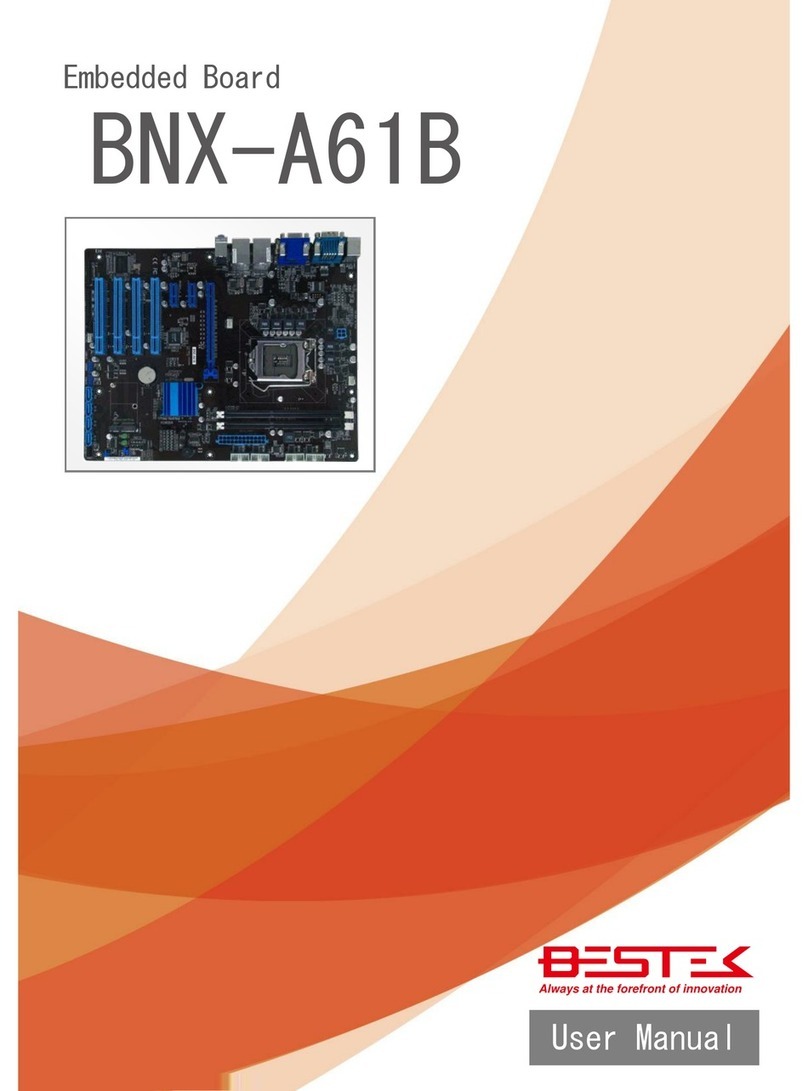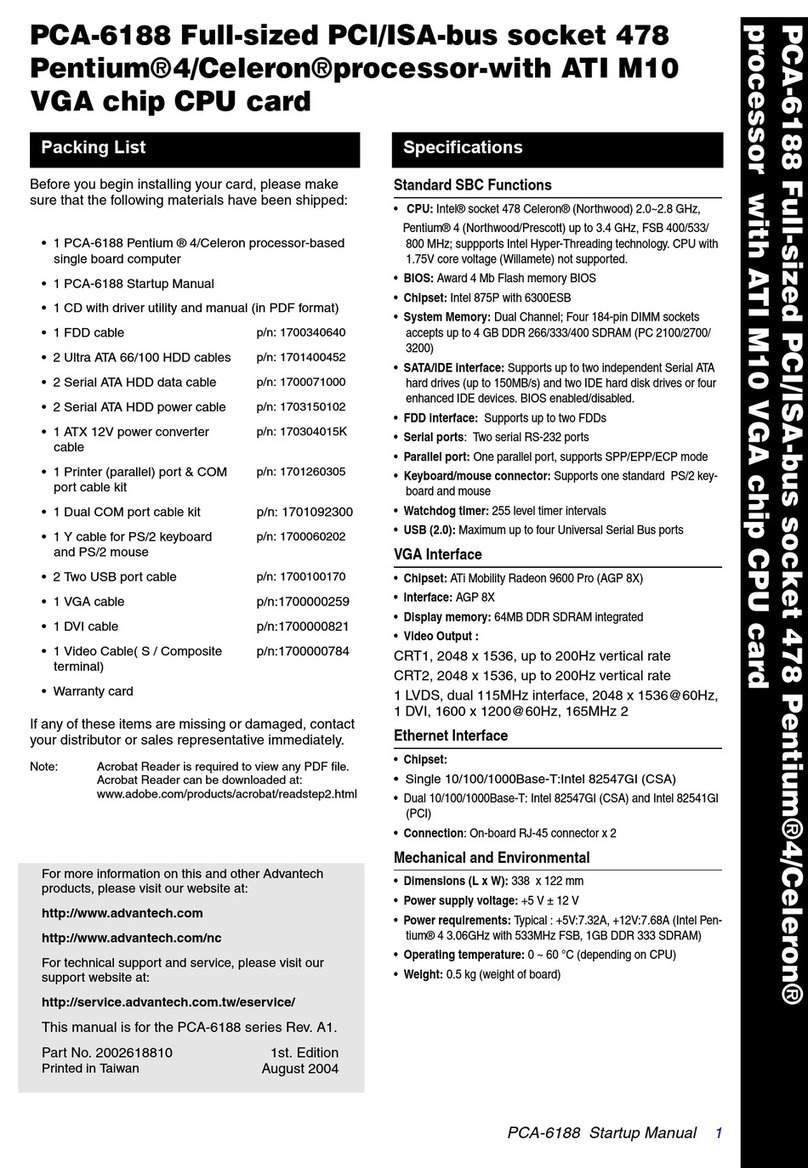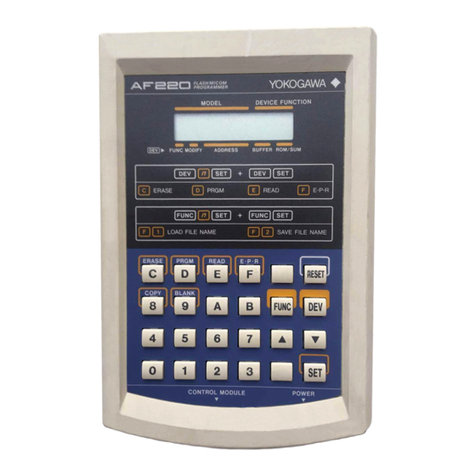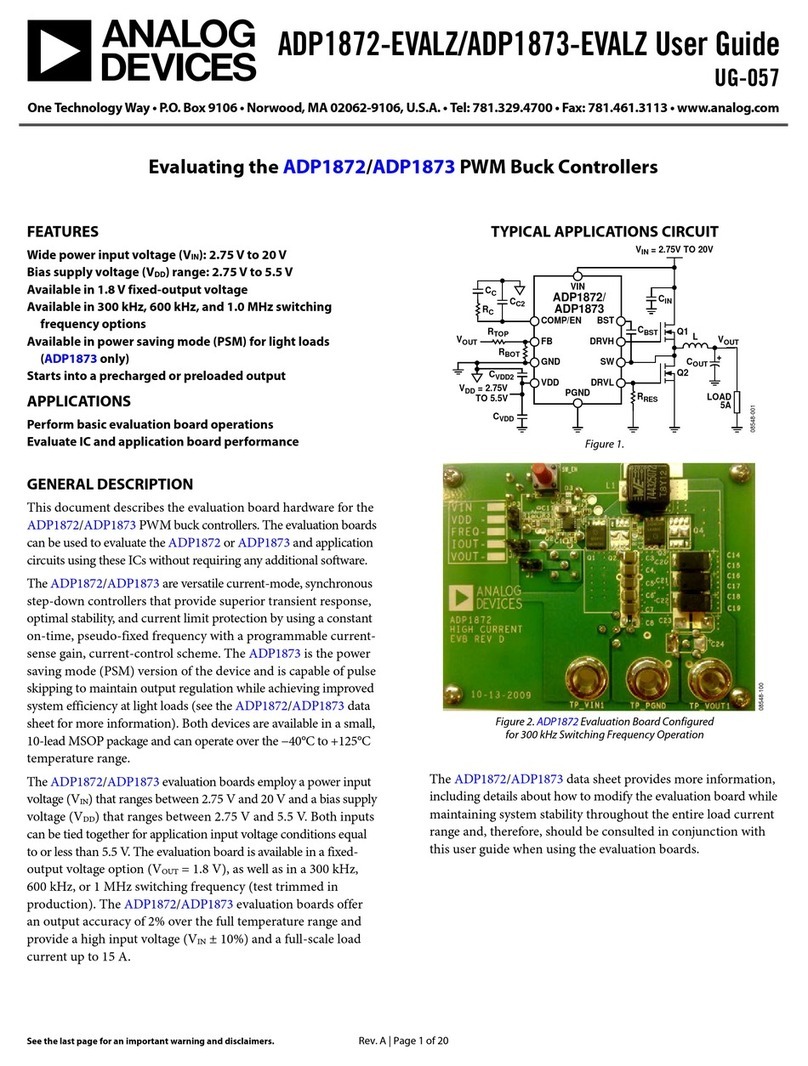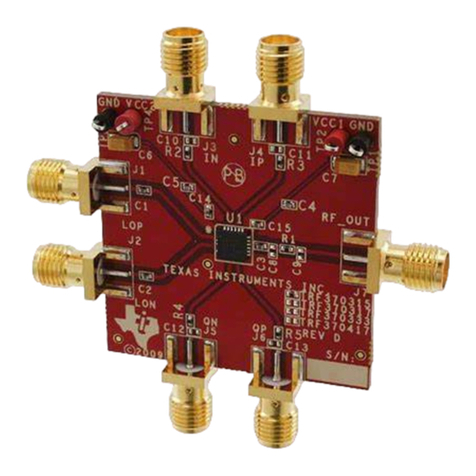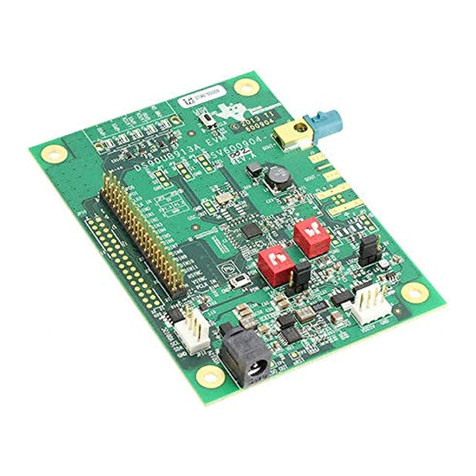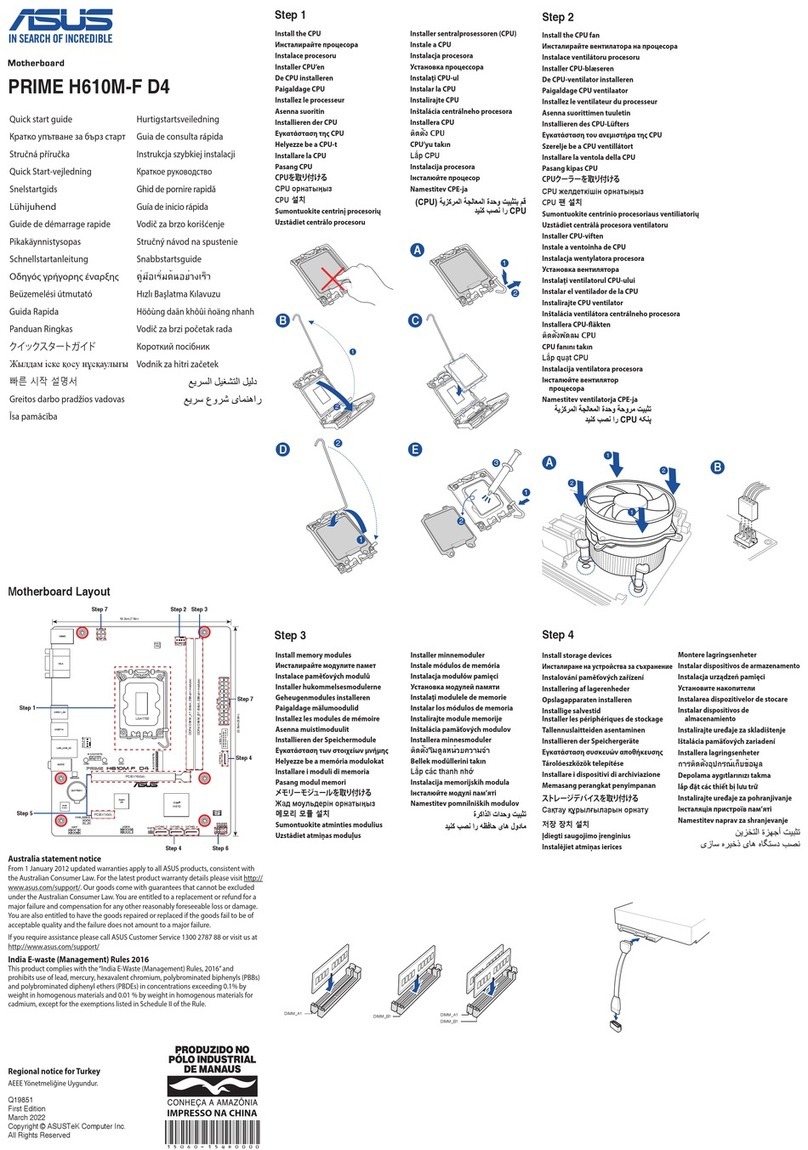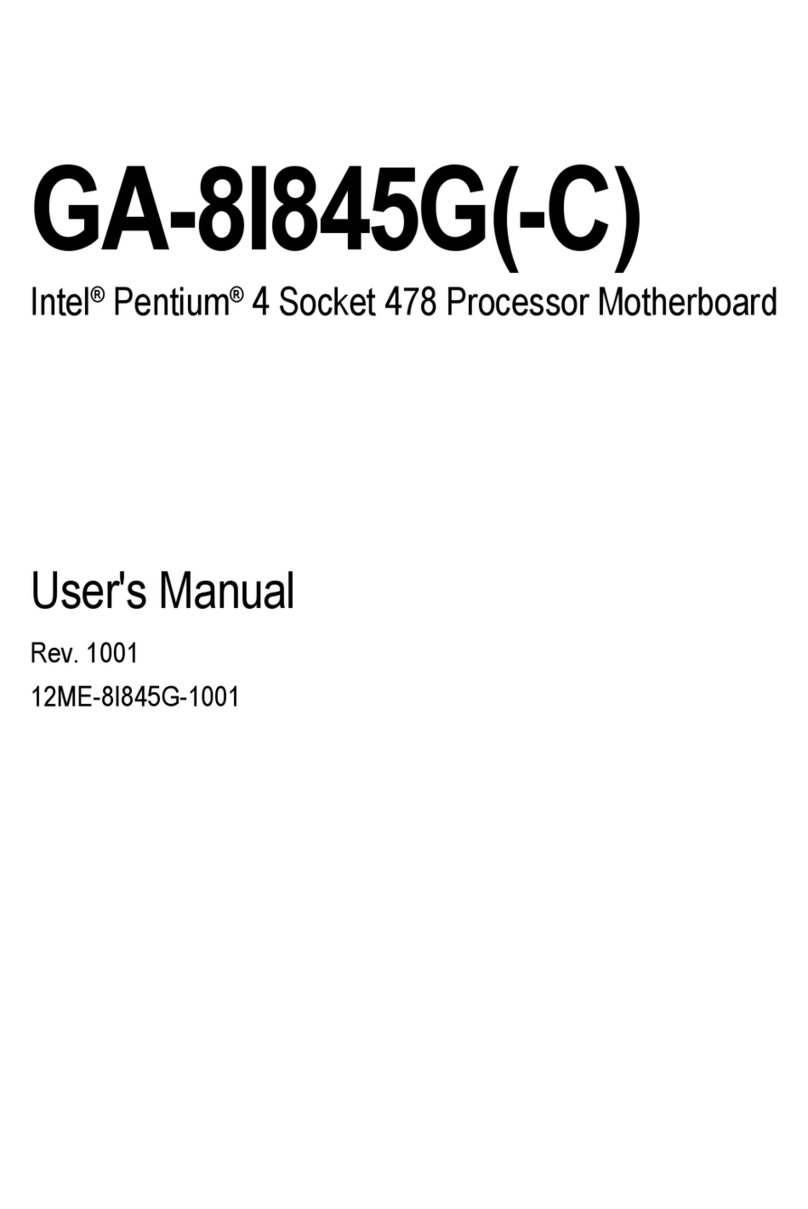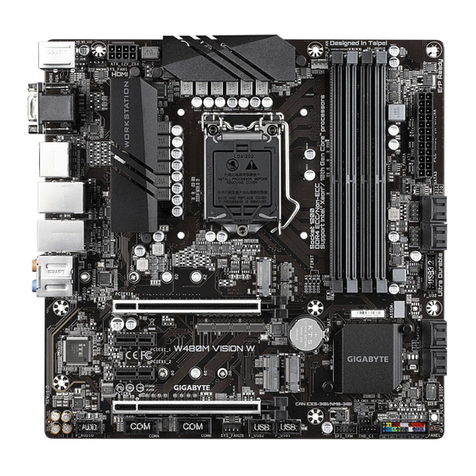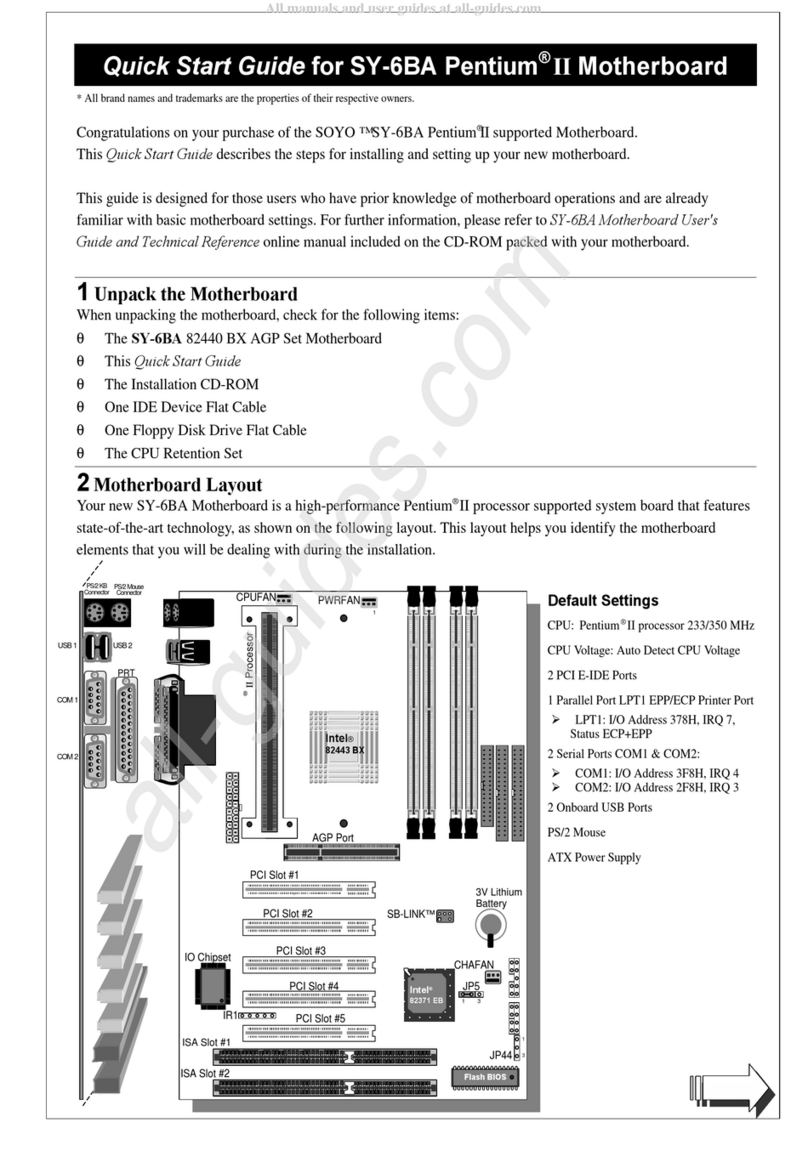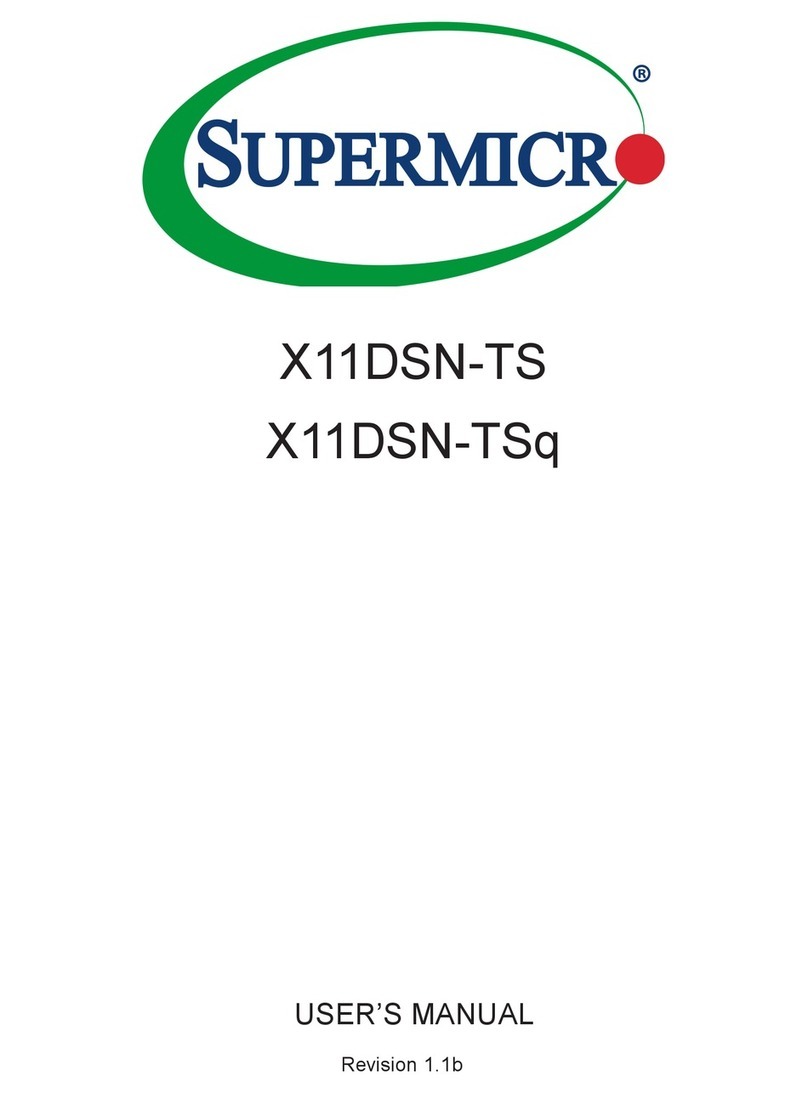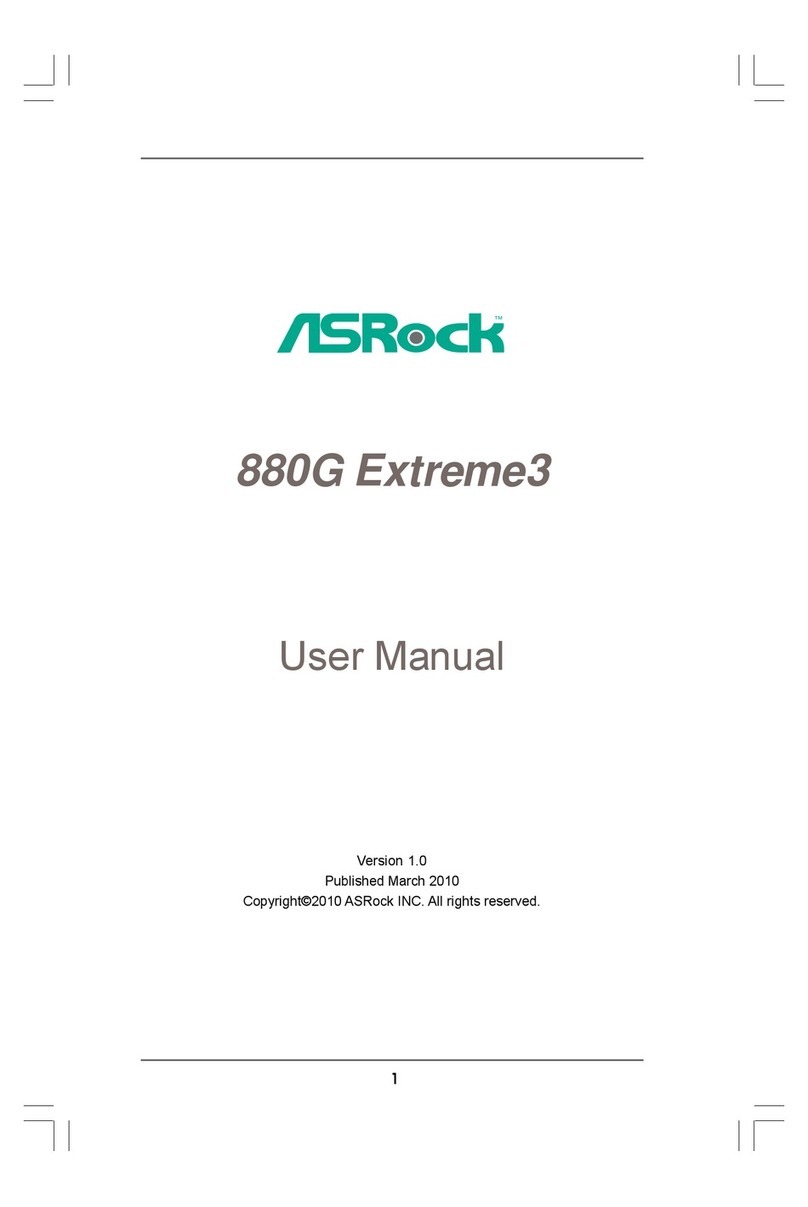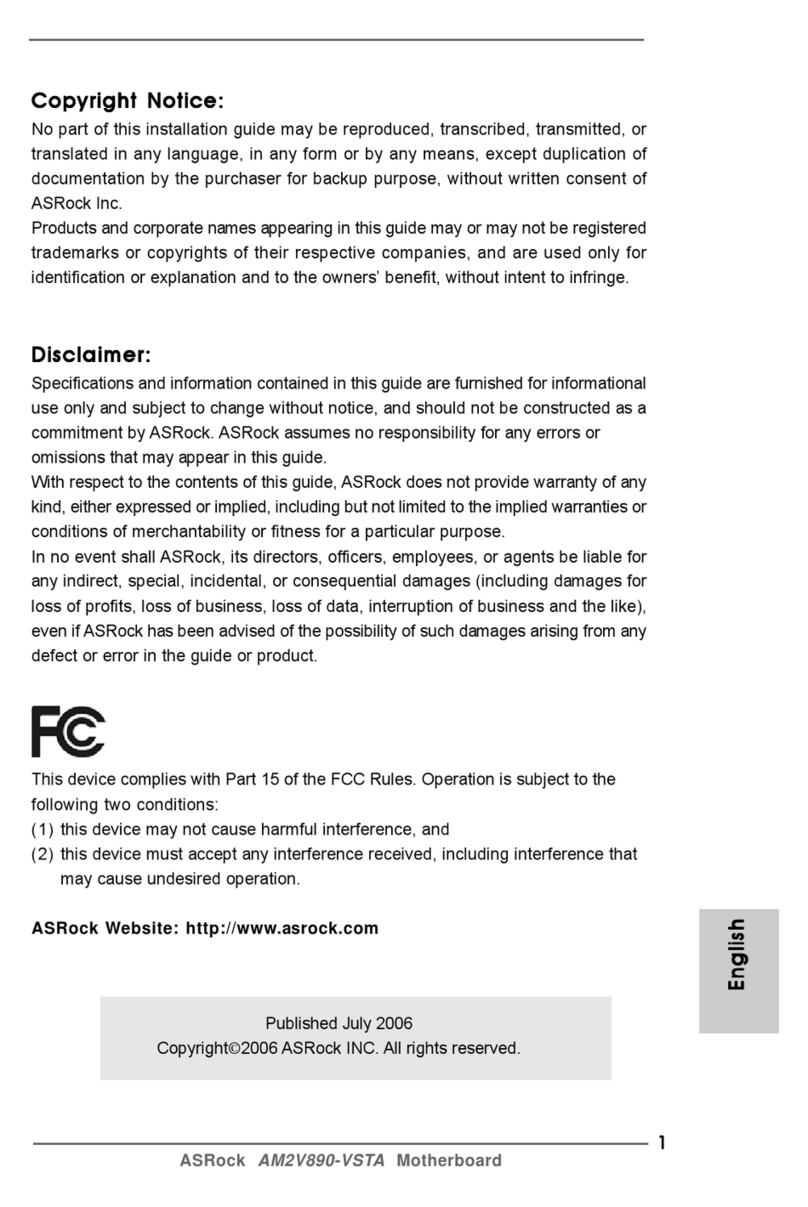Geehy SEMICONDUCTOR APM32F051 User manual

User Manual
APM32F051 EVAL Board
Version: V1.0

www.geehy.com Page 1
Introduction
This User Manual mainly describes the functions, on-board resources and supporting
SDK of APM32F051 EVA Board. The SDK and related data mentioned in the document
can be obtained from the official website of Geehy (www.geehy. com).
APM32 Ecosystem
The APM32 ecosystem includes product application solution, hardware development
board, download simulation tool, development tool chain and SDK. Moreover, the
development tool chain is suitable for many development tools at home and abroad,
such as Keil-MDK, IAR for Arm, Eclipse, etc., and all of them are equipped with relevant
enginering in the SDK to meet the needs of different users in different platforms.
Figure 1 APM32 Ecosystem

www.geehy.com Page 2
Evaluation board
The APM32F051 EVAL Board is a complete demonstration and development platform
for the basic APM32F0xx series MCU, which is used to demonstrate RS485, RTC, TSC
and other peripheral functions. It carries an APM32F051R8T6 MCU chip, which is based
on ARM Cortex-M0+core, with operating frequency 48MHz, Flash 64KB, and has a
standard JTAG interface and supports users to simulate and download programs.
Figure 2 APM32F051 EVAL Board
Support installation of
LCD

www.geehy.com Page 3
Contents
Introduction.......................................................................................................................1
Function overview............................................................................................................4
SDK Overview...................................................................................................................7
References ......................................................................................................................15
Revision History .............................................................................................................16

www.geehy.com Page 4
Function overview
The APM32F051 EVAL Board includes the following peripheral functions, and is
equipped with the EVAL SDK, which can help developers evaluate chip performance or
develop related applications
1.TFT LCD
2.EEPROM
3.SPI FLASH
4.Touch Sensor Keyboard
5.Potentiometer
6.RS485
7.Button x 4
8.LED x 4
Figure 3 APM32F051 EVAL Board Overview

www.geehy.com Page 5
Power supply
APM32F051 EVAL Board can be powered by external 5V DC power supply or USB.
JTAG interface can supply power to MCU, and other required voltages are provided by
on-board voltage regulator.
Figure 4 Power Supply of Evaluation Board
Battery interface
On-board CR1220 standard battery interface.
Clock
APM32F051 EVAL Board carries two external clocks, including:
- X1, 32.768KHz clock for RTC
- X2, 8MHz clock is used for APM32F051R8T6. If the internal RC clock of the chip is
used, the clock can be removed or the HSE can be disabled
Reset control
Two reset controls are provided:
- RESET key; press it to send a reset signal
- JTAG reset signal
Simulation and download interface
A standard 20-pin IDC JTAG connector on board.

www.geehy.com Page 6
LCD screen
A SPI LCD control interface is provided. The supporting routine is 2.4-inch TFT LCD
screen with 240 x 320 pixels, and the control chip is ILI9341. The LCD screen is driven
through MCU SPI interface.
LED lights
4 general red LED lights on board, which can be used for display.
Keys
4 keys provided, which can be used for LCD menu switching or other input purposes.
EEPROM
Onboard AT24C02 EEPROM chip, which can be driven by I2C peripheral.
Flash
A Flash chip on board, which provides 2MB external storage space and is driven by SPI.
RS485 interface
Provide a 485 interface led from the connecting terminal.
Touch keys
4 touch keys on board, which are connected to two capacitive sensing channels in
Group 2 and two capacitive sensing channels in Group 3.
Figure 5 Touch Key Signal Connection

www.geehy.com Page 7
SDK Overview
The SDK[1] is provided in the form of compressed packages, including on-board driver
packages, such as basic LED, Button and COM drivers, I2C for EEPROM driver
packages, LCD screen driver packages and W25Q16 Flash driver packages, as well as
multiple necessary libraries, such as APM32F0xx standard library, TSC device library
and many applications that are easy to reuse, such as EEPROM reading and writing,
LCD multi-level menu, RTC calendar, TSC, and RS485.
Figure 6 Directory Structure
[1]. There is no package supported by IDE in the SDK of APM32xx EVALBoard. You
need to obtain it on the official website of Geehy www.geehy.com.

www.geehy.com Page 8
On-board driver
The on-board drivers contain basic LED, Button and COM drivers, I2C for EEPROM
driver package, LCD screen driver package and W25Q16 Flash driver package.
Figure 7 On-board Driver
Library file
The library files contain the APM32F0xx standard library and TSC device library.
IDE support
This SDK routine is equipped with the engineering of two development tools of Keil-MDK
and IAR for Arm.
Routine
The routine folder contains many applications that are easy to reuse, such as EEPROM
reading and writing, LCD multi-level menu, RTC calendar, TSC, and RS485
communication.

www.geehy.com Page 9
3.4.1 ADC
The ADC uses a 10K potentiometer as the sampling source, which can be adjusted by
the knob. The AD sampling channel is channel 10. After downloading and running of the
routine, the change of the voltage value sampled by ADC will be displayed in real time
on the on-board LCD.
Figure 8 ADC Menu
3.4.2 I2C EEPROM
EEPROM adopts AT24C02, the device address is 0xA0, and the addressing address is
8bit. After downloading and running of the routine, the routine test process is to write and
read 255 data to EEPROM and compare them.
Figure 9 I2C EEPROM Menu

www.geehy.com Page 11
3.4.4 RTC Clock
This routine uses RTC and displays an example of RTC calendar in combination with
LCD screen.
Figure 11 RTC Menu
3.4.5 SPI Flash
This routine uses SPI to access the external flash chip W25Q16, with a size of 2MB. The
test process is to write and read data to Flash and compare them.
Figure 12 SPI Flash Menu

www.geehy.com Page 12
3.4.6 TSC
The TSC Key Liner Rotate routine mainly displays the response results of touch keys.
Figure 13 TSC Key Liner Rotate Menu
The touch sensing function of APM32 is implemented based on the principle of surface
charge transfer and acquisition. The principle is to charge the sensor capacitor Cx and
transfer the accumulated charge to the sampling capacitor Cs. This process will be
repeated until the voltage at both ends of the sampling capacitor Cs reaches the
threshold. The number of charge transfer times required to reach the threshold is used to
indicate the size of the capacitance Cx to be measured.
When sensor KEY1 is touched, the capacitance of the sensor to the ground increases,
the number of charge transfer times required for the voltage at both ends of the sampling
capacitor Cs to reach the threshold decreases, and the measured value is reduced.
When the measured value is lower than the threshold value, TSC Device Lib will
generate a detection event.
Figure 14 TSC Example
Capacitance to be
measured Cx
Sampling
capacitance Cs
Body capacitance Cr

www.geehy.com Page 13
3.4.7 USART Polling
This routine shows how to transmit and receive serial port data by polling. The test
process is to send the string '123456' to the upper computer through USART1, the upper
computer returns the same string '123456', and then the lower computer checks and
matches, and finally displays the matching results.
Figure 15 USART Polling Menu
3.4.8 USART Interrupt
This routine shows how to send serial port data by interrupt. The test process is to send
a string to the upper computer through USART1.
Figure 16USART Interrupt Menu

www.geehy.com Page 17
Statement
This manual is formulated and published by Zhuhai Geehy Semiconductor Co., Ltd.
(hereinafter referred to as "Geehy"). The contents in this manual are protected by laws and
regulations of trademark, copyright and software copyright. Geehy reserves the right to correct
and modify this manual at any time. Please read this manual carefully before using the product.
Once you use the product, it means that you (hereinafter referred to as the "users") have known
and accepted all the contents of this manual. Users shall use the product in accordance with
relevant laws and regulations and the requirements of this manual.
1. Ownership of rights
This manual can only be used in combination with chip products and software products of
corresponding models provided by Geehy. Without the prior permission of Geehy, no unit or
individual may copy, transcribe, modify, edit or disseminate all or part of the contents of this
manual for any reason or in any form.
The "Geehy" or "Geehy" words or graphics with "®" or "TM" in this manual are trademarks of
Geehy. Other product or service names displayed on Geehy products are the property of their
respective owners.
2. No intellectual property license
Geehy owns all rights, ownership and intellectual property rights involved in this manual.
Geehy shall not be deemed to grant the license or right of any intellectual property to users
explicitly or implicitly due to the sale and distribution of Geehy products and this manual.
If any third party’s products, services or intellectual property are involved in this manual, it
shall not be deemed that Geehy authorizes users to use the aforesaid third party’s products,
services or intellectual property, unless otherwise agreed in sales order or sales contract of
Geehy.
3. Version update
Users can obtain the latest manual of the corresponding products when ordering Geehy
products.
If the contents in this manual are inconsistent with Geehy products, the agreement in Geehy
sales order or sales contract shall prevail.
4. Information reliability
The relevant data in this manual are obtained from batch test by Geehy Laboratory or
cooperative third-party testing organization. However, clerical errors in correction or errors caused
by differences in testing environment may occur inevitably. Therefore, users should understand
that Geehy does not bear any responsibility for such errors that may occur in this manual. The
relevant data in this manual are only used to guide users as performance parameter reference
and do not constitute Geehy's guarantee for any product performance.
Users shall select appropriate Geehy products according to their own needs, and effectively
verify and test the applicability of Geehy products to confirm that Geehy products meet their own
needs, corresponding standards, safety or other reliability requirements. If loses are caused to
users due to the user's failure to fully verify and test Geehy products, Geehy will not bear any
responsibility.
5. Compliance requirements
Users shall abide by all applicable local laws and regulations when using this manual and the
matching Geehy products. Users shall understand that the products may be restricted by the
export, re-export or other laws of the countries of the product suppliers, Geehy, Geehy distributors

www.geehy.com Page 18
and users. Users (on behalf of itself, subsidiaries and affiliated enterprises) shall agree and
promise to abide by all applicable laws and regulations on the export and re-export of Geehy
products and/or technologies and direct products.
6. Disclaimer
This manual is provided by Geehy "as is". To the extent permitted by applicable laws, Geehy
does not provide any form of express or implied warranty, including without limitation the warranty
of product merchantability and applicability of specific purposes.
Geehy will bear no responsibility for any disputes arising from the subsequent design and use
of Geehy products by users.
7. Limitation of liability
In any case, unless required by applicable laws or agreed in writing, Geehy and/or any third
party providing this manual "as is" shall not be liable for damages, including any general damages,
special direct, indirect or collateral damages arising from the use or no use of the information in
this manual (including without limitation data loss or inaccuracy, or losses suffered by users or
third parties).
8. Scope of application
The information in this manual replaces the information provided in all previous versions of
the manual.
©2023 Zhuhai Geehy Semiconductor Co., Ltd. - All Rights Reserved
Other Geehy SEMICONDUCTOR Motherboard manuals




